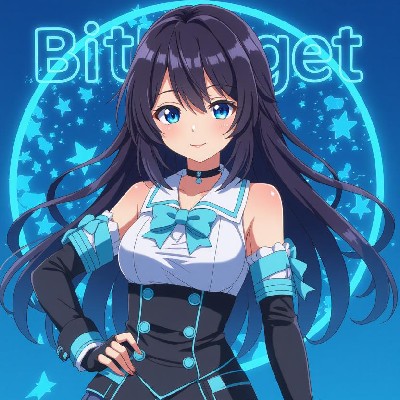
Gulshan-E-Wafa
2025/09/17 04:57
From shadow dollars to mainstream liquidity - stablecoins have ridden every Fed cycle like a hidden!
A stablecoin is a type of cryptocurrency designed to maintain a stable value by being pegged to a specific asset or basket of assets, such as a fiat currency (e.g, the US dollar), commodities, or other cryptocurrencies.
This pegging mechanism aims to minimize volatility, making stablecoins more suitable for everyday transactions, remittances, and as a store of value compared to more volatile cryptocurrencies like Bitcoin.
$USDC $USDS $USD1 $TUSD $DAI
There are several types: fiat-collateralized (backed by reserves of fiat currency), crypto-collateralized (backed by other cryptocurrencies), algorithmic (maintained through smart contracts and incentives without full reserves), and commodity-backed (pegged to assets like gold).
Popular examples include Tether (USDT) and USD Coin (USDC).
Complete History of Stablecoins Year by Year Till Today.
The history of stablecoins begins shortly after Bitcoin's launch, evolving from early experiments to a multi-billion-dollar market.
Below is a year-by-year timeline based on key milestones, launches, and developments up to September2025:
2014: The concept emerges with the launch of BtUSD on the BitSres blockchain in July, the world's first stablecoin, pegged to the USD via crypto collateral.
In September, Nu-Bits (USNBT) is introduced on the Peercoin network as another early attempt at stability.
Tether (originally Realcoin) launches in October as the first fiat-backed stablecoin, initially on the Omni Layer protocol over Bitcoin, backed 1:1 by USD reserves.
2015: Tether gains traction for trading on exchanges, but the market remains niche.
Early discussions on stability mechanisms highlight risks like depegging.
2016: Stablecoins see limited adoption amid broader crypto growth.
Tether expands its use cases in trading pairs.
2017: The crypto boom increases demand for stable assets.
Tether's market cap grows significantly, but controversies arise over reserve transparency.
2018: Major launches include USD Coin (USDC) by Circle and Cinbase in September, backed by USD reserves and audited for transparency.
True-USD (TUSD) and Paxos- Standard (PAX) also debut, emphasizing regulatory compliance.
Ge-mini Dollar (GUSD) launches as the first regulated stablecoin.
Market cap surpasses $2 billion amid the crypto winter.
2019: Dai (DAI) from MakerDAO gains prominence as a decentralized, crypto-collateralized stablecoin on Ethereum.
B USD (B-USD) launches in partnership with Paxos.
Total market cap reaches around $5 billion.
Regulatory scrutiny increases, with concerns over systemic risks.
2020: Explosive growth during the DeFi boom; stablecoins become essential for liquidity in decentralized finance.
USDT and USDC dominate, with market cap exceeding $20 billion by year-end.
Algorithmic stablecoins like Ample-forth experiment with supply adjustments.
2021: Stablecoin market cap surges to over $100 billion.
Ethena USDe (USDe) prototypes emerge.
Regulatory proposals in the US and EU focus on oversight.
Tether settles with regulators over reserve claims.
2022: The TerraUSD (UST) collapse in May causes a major depegging event, wiping out $40 billion and shaking confidence in algorithmic models.
Despite this, fiat-backed stablecoins like USDC grow.
Market cap dips but recovers to around $130 billion.
2023: Focus on regulation; the EU's MiCA framework is drafted for stablecoins.
USDC briefly depegs due to Silicon Valley Bank exposure but recovers.
Py-Pal launches PYUSD.
Market cap stabilizes around $120-140 billion.
Depegging events highlight risks in governance and reserves.
2024: Stablecoin adoption accelerates with institutional involvement.
Tether reports record profits ($13 billion).
BlackRock and other firms tokenize assets backing stablecoins.
Market cap climbs to $180 billion. Solana sees rapid stablecoin growth due to low fees.
2025 (up to September 13): Stablecoin market cap reaches approximately $250-275 billion, driven by cross-border payments and DeFi.
Ethereum and Solana lead growth, with $17 billion and over $1 billion added respectively.
Regulatory advancements like the US GENIUS Act and EU MiCA implementation boost confidence.
Projections suggest growth to $3 trillion in coming years.
New entrants like bank-issued stablecoins emerge, with focus on tokenized cash.
This timeline reflects key events; the sector has seen over 334 peg attempts historically, with varying success.
Which Chain Has How Much Share in Stablecoins (e.g., Ethereum, Solana).
As of mid-2025, the total stablecoin supply is around $250-275 billion.
Ethereum dominates due to its established DeFi ecosystem, security, and liquidity.
Here's a breakdown of market shares by major blockchains:
Ethereum: Approximately 65.4% of total stablecoin supply (~$165-180 billion).
It hosts major stablecoins like USDT, USDC, and DAI, benefiting from high TVL (total value locked) and institutional adoption.
Recent growth: +$17 billion in supply.
Solana: Around 5.4% (~$13-15 billion), up from 1.6% in prior years.
Known for high-speed transactions and low fees, it has seen over $1 billion in growth, primarily in USDT and USDC.
It's the second-fastest growing chain for stablecoins.
Other Chains: Base (Ethereum Layer 2): 5.6% (~$14 billion);
Arbitrum: ~3-4%;
BNB Chain: ~3%;
Tron: Significant for USDT (~20-25% of USDT supply, but overall chain share ~10-15%);
Polygon, Optimism, and Avalanche: Smaller shares (1-2% each).
Solana's ratio to Ethereum in circulating supply is growing but still trails significantly.
Ethereum's lead is due to its maturity, while Solana gains from efficiency.
Stablecoin Role in Building Economies in the Future
Stablecoins are poised to play a transformative role in future economies, particularly in emerging markets and global finance:
Cross-Border Payments and Remittances: They enable faster, cheaper international transfers (e.g., near-instant settlements at low costs), reducing reliance on traditional systems like SWIFT.
This could boost economic inclusion in regions with high remittance fees.
Wealth Preservation and Financial Access: In volatile economies, they act as a hedge against inflation or currency devaluation, providing unbanked populations access to stable assets via mobile wallets.
Tokenized Assets and DeFi: As "tokenized cash," they facilitate efficient capital markets, enabling 24/7 trading, programmable money, and integration with CBDCs (central bank digital currencies).
Projections suggest they could minimize adverse economic outcomes by enhancing monetary resilience.
Broader Economic Integration: They could serve subsidiary roles in next-gen monetary systems, supporting merchant adoption and reducing payment frictions, potentially reaching $3 trillion in market cap.
Risks include regulatory gaps and illicit use, but with proper oversight, they could democratize finance.
Stablecoin Impact in the Crypto Industry.
Stablecoins have profoundly shaped the crypto industry:
Liquidity and Trading Backbone:
They serve as entry/exit ramps for crypto trading, enabling stable pairs without fiat conversions.
Over 90% of crypto trades involve stablecoins, reducing volatility exposure.
DeFi Growth: Essential for lending, borrowing, and yield farming; they've driven DeFi TVL to trillions by providing stable collateral.
Payments Transformation: Enabling instant, low-cost transactions, they've processed billions in volume, challenging traditional networks like credit cards.
Risks and Shocks: Depeggings (e.g., Terra) have caused market disruptions, fire sales, and contagion, highlighting needs for better regulation.
Overall, they've bridged tradfi and crypto, with adoption growing 28% YoY.
Which Giant Corporations Have Major Stakes in Stablecoins and What Chains They Use.
Several corporations hold significant stakes, often through issuance, backing, or investment:
BlackRock: Manages the $2.9 billion BUIDL tokenized money market fund, used as collateral for stablecoins and derivatives.
Primarily on Ethereum, but expanded to Solana in 2025 via partnerships like Securitize.
It's backing new stablecoins like those from Frax Finance.
BlackRock views stablecoins as here to stay, with $250 billion adoption since 2020.
Tether Holdings: Issues USDT ($120+ billion market cap), the largest stablecoin.
Primarily on Tron and Ethereum; 2024 profits reached $13 billion, rivaling BlackRock's.
Circle: Issues USDC (~$35 billion), on Ethereum, Solana, and others. Focuses on compliance.
Paxos: Issues B-USD and P-AX, on Ethereum; partners with Bnce.
JPMorgan: Issues JPM Coin (stablecoin-like), on its Onyx blockchain (Ethereum-based).
PayPal: Issues PY-

Gulshan-E-Wafa
2025/08/16 08:39
The Evolution of Stablecoins: How Aave’s GHO Redefines Decentralized Dollar Stability
History and Development of Stablecoins
Stablecoins first emerged around 2014 with two very different designs: on July 23, 2014 BtUSD launched on BtShares and a few months later RealCoin (renamed Tether/USDT) launched as a fiat-backed token pegged 1:1 to USD. These early examples foreshadowed the two main models of stablecoin: one collateralized with cryptocurrency, the other backed by fiat reserves. Major milestones followed quickly:
2015–2016: Bitcoin-backed stablecoins like NuBits attempted fully algorithmic pegs. Meanwhile, USDT grew enormously, showing that fiat-backed coins could dominate liquidity.
2017: MkerDAO introduced DAI, an overcollateralized crypto-backed stablecoin on Ethereum (initially backed only by ETH at ~170% collateral). DAI proved decentralized stablecoins could work, inspiring others.
2018: Regulated fiat-backed coins entered the market. USDC and TrueUSD launched emphasizing reserve transparency and regular audits. These coins focused on compliance and earned trust via attestations to fiat reserves.
2019–2020: Stablecoin market exploded. By 2020, USDT and USDC controlled the vast majority of supply, with global stablecoin market capitalization reaching ~$105 billion.
2022: The risks of unbacked algorithmic designs became painfully clear. TerraUSD (UST) – a purely algorithmic stablecoin – collapsed in May 2022, wiping out ~$40 billion in market value. This crisis discredited “break-even” algorithmic coins and highlighted the need for collateral buffers.
2023–2025: Stablecoins continued maturing. Market cap hit new highs (~$235 billion by mid-2025). Regulatory frameworks (e.g. Europe’s MiCA) began requiring on-chain reserves and audits for fiat-backed coins. DeFi protocols moved to issue native stablecoins: for example, Aave launched GHO (2023) as a decentralized crypto-backed stablecoin.
By 2025, stablecoins had diversified into fiat-backed (USDT, USDC, TUSD, etc.), crypto-backed (DAI, LUSD, GHO, etc.), and hybrid/algorithmic (FRAX, TerraUSD in the past) designs. Early stablecoins demonstrated the models (e.g. BitUSD for crypto-backed and USDT for fiat-backed), while later innovations like DAI and FRAX showed how decentralization and algorithmic logic can be used to maintain the peg. The catastrophic failure of TerraUSD in 2022 especially underscored that fully uncollateralized pegs can fail in a crisis.
Throughout this period, transparency and governance have become key differentiators. Fiat-backed coins like USDC and TUSD boast regular third-party attestations of reserves, whereas crypto-backed coins are generally open-source and on-chain (allowing anyone to verify collateral).
GHO Stablecoin (Aave’s Native Stablecoin)
Aave’s GHO is a decentralized, overcollateralized stablecoin native to the Aave protocol. Launched in mid-2023, GHO is minted on Ethereum by users who supply crypto assets as collateral in Aave V3. Its value is pegged to the U.S. dollar “through market efficiency” (arbitrage), and any minted GHO must be over-collateralized (initial proposals set a high collateral ratio, e.g. ~295%). Key aspects of GHO’s design include:
Collateral Model: GHO is backed by a basket of crypto assets that users have deposited in Aave. Any asset on Aave V3 (ETH, WBTC, stablecoins, etc.) can back GHO. When a user wants GHO, they supply collateral on Aave; that collateral is locked in the lending pool and the user can borrow GHO against it. As with all Aave loans, this position can be partially collateralized by multiple assets at once - GHO loans are multi-collateral by default. Importantly, since the collateral remains in Aave’s lending market, it earns interest while locked, effectively reducing the borrower’s net cost. All GHO loans require interest payments, and by design 100% of that interest goes to the Aave DAO treasury (no portion is paid to depositors). Some discounts (e.g. up to 30%) are given to Aave Safety Module stakers.
Minting and Peg Mechanism: GHO has no algorithmic supply adjustment; its peg is maintained by economic incentives. If GHO trades below $1, arbitrageurs can buy it cheaply and repay their loans, burning GHO and capturing the difference. If GHO trades above $1, users are incentivized to borrow more GHO (at $1) and sell it on the market. In practice, GHO has stayed extremely close to $1 since launch (e.g. as of mid-2025 price ≈$0.998). Over one year the price moved only ±5% around the peg (all-time high $1.05, all-time low $0.965 on July 12, 2024), indicating effective peg maintenance with these market-driven mechanisms.
Facilitators and Governance: Rather than a single issuer, GHO is minted by approved Facilitators – entities that the Aave DAO authorizes to supply GHO to the market. Initially the Aave protocol itself is the primary facilitator, and it may add others (e.g. “FlashMinter” bots or future partners). Each facilitator is given a “bucket” limit on how much GHO it can mint. For example, initial DAO governance proposals specified fixed minting caps per facilitator to prevent any one party from flooding the market. This model is depicted conceptually below:
Figure: Conceptual model of GHO facilitators. Aave governance allows on-chain or real-world entities to become GHO issuers within capped “buckets”.
Aave’s DAO retains full governance over GHO’s parameters. The community can vote to adjust the collateral ratio, interest rate, interest discounts, and maximum supply. All GHO code is open-source and audited, and any changes require DAO approval. In this sense, GHO is a governance-layer stablecoin: decisions about minting policy and risk parameters are made by AAVE token holders rather than a central company.
Unique Features: GHO differs from other stablecoins in several ways. Unlike fiat-backed coins (USDT, USDC, TUSD) which hold off-chain reserves, GHO’s backing is fully transparent on-chain (anyone can verify the collateral in Aave’s contracts). Unlike algorithmic coins (e.g. Terra UST) with no real backing, GHO is overcollateralized, trading with the support of locked crypto. Compared to DAI (MakerDAO) which uses individual vaults, GHO uses position-based minting where any Aave loan position across assets can generate GHO. GHO loans are interest-bearing (earning Aave DAO revenue) rather than interest-free. And because Aave’s collateral earns yield, GHO borrowers are effectively paying interest net of what they earn on collateral a unique “interest-earning collateral” advantage. Finally, GHO is inherently interoperable: Aave DAO approved cross-chain bridging via Chainlink’s CCIP, so GHO was expanded to Arbitrum (2024), Base (2024) and Avalanche and Gnosis Chain (2025) to grow its reach.
Overall, GHO is designed as a decentralized, overcollateralized stablecoin governed by a DAO, with built-in interest-paying loans and community-controlled issuance. It aims to combine blockchain transparency and censorship-resistance (no centralized issuer) with robust collateral backing and revenue to the protocol. Since launch, GHO’s supply and adoption have grown steadily: by mid-2025 there were ~349 million GHO outstanding (market cap ≈$349 M), and it remained tightly pegged near $1. The GHO ecosystem continues expanding (e.g. a yield-bearing sGHO vault and Aave V4 support is planned) to drive further adoption.
Comparing GHO to Other Major Stablecoins
The table below compares GHO against six prominent stablecoins across several dimensions:
Stablecoin Type Issuer Collateral & Transparency Governance Peg Stability & History Market Cap / 24h Volume (approx.)
GHO Crypto-backed (over-<br>collateralized) Aave Protocol (decentralized via Aave DAO) Backed by on-chain crypto assets supplied to Aave (ETH, WBTC, USDC, etc.); fully on-chain and transparent Decentralized (Aave DAO votes on collateral ratio, interest, facilitators) Maintained peg tightly via arbitrage incentives; price has stayed ≈$1 (all-time high $1.05, low $0.965); no major crashes. ~$349 M / $2–3 M.
USDT Fiat-backed Tether Ltd (centralized) Claimed 1:1 USD reserves (cash, T-bills, bonds, crypto); actual reserve backing has been partially opaque (reports ~61% backing); audits are infrequent Centralized (Tether issues, reserves managed by company) Very stable, ~1.00 peg historically; largest fluctuations were brief dips (e.g. ~$0.84 in 2017, ~$0.94 in 2022). Concerns over full backing have persisted. ~$139 B / ~$10 B.
USDC Fiat-backed Circle/Centre Consortium (regulated) Backed by fiat USD and liquid securities (T-bills); high transparency with monthly attestations and reputable institutional custody Centralized (managed by Circle/Centre) Pegged very stably at $1.00 (with one notable depeg to ~$0.87 during March 2023 SVB crisis, from which it quickly recovered). ~$41 B / ~$2–3 B (daily).
DAI Crypto-backed (hybrid) MakerDAO (decentralized) Collateralized by crypto (ETH, WBTC, USDC, others) on-chain; multi-collateral model with ~150–200% total backing; collateral is public on Ethereum Decentralized (MakerDAO MKR votes on parameters) Generally stable at $1.00 thanks to overcollateralization; had mild depeg to ~$0.85 during March 2023 crisis, but quickly recovered. Robust reserve policy (e.g. ~42% backed by USDC/other stables) maintains peg. ~$5.4 B / ~$100–200 M.
FRAX Fractional-algorithmic (hybrid) Frax Finance (decentralized) Partially collateralized by crypto (often USDC/USDT and smaller crypto holdings) plus algorithmic issuance (FRAX minting via FXS collateral); on-chain transparency. The target collateral ratio dynamically adjusts based on demand. Decentralized (Frax DAO votes on collateral ratio and policies) Generally stable but more volatile; design allows collateral ratio to drop below 100%, so FRAX can depeg modestly during stress (e.g. fell to ~$0.90s in March 2023).
Uses market incentives to re-adjust. ~$77 M / low (tens of thousands, see CoinMarketCap)
TUSD Fiat-backed TrustToken (centralized) 1:1 USD reserves held in escrow, with live on-chain attestations by auditors. Highly transparent for a fiat-backed coin. Centralized (TrustToken issues, but uses multiple custodians) Very stable at $1.00 (minor short-lived blips, none of major note). Multi-chain availability (Ethereum, BSC, Avalanche, etc.). ~$494 M / ~$60 M
LUSD Crypto-backed Liquity Protocol (decentralized) Collateral: only ETH (minimum 110% collateral ratio); fully on-chain. No fiat holdings. “Governance-free” protocol (Liquidy Foundation vesting, but no active governance) Peg typically at $1.00; brief minor deviations have been negligible. Utilizes a stability pool to defend peg. ~$39 M / ~$0.03 M
Notes on Peg Stability: Fiat-backed coins (USDT, USDC, TUSD) have generally stayed extremely close to $1.00 due to redemption programs, with only brief, minor deviations (for example, USDT briefly dipped to $0.84 in 2017 and $0.94 in 2022; USDC fell to ~$0.87 in March 2023 and rebounded). Crypto-backed coins like DAI and LUSD rely on overcollateralization and auto-liquidations to maintain the peg; DAI’s peg has held firm in normal markets (with only a one-day trough at ~$0.85 in March 2023), while LUSD is typically at ~$0.99–1.00. Algorithmic/fractional designs like FRAX have more fluctuation: FRAX’s flexible collateral ratio means it can trade below $1 during stress (e.g. ~$0.91 in Mar 2023) but uses arbitrage and ratio adjustments to recover. GHO has so far shown strong stability comparable to top coins, trading within a few cents of the peg and earning revenue for Aave.
Adoption and Volume: As of mid-2025, USDT and USDC dominate stablecoin adoption (roughly $139B and $41B market caps). DAI is smaller ($349M, matching supply of ~349 M) is comparable to mid-tier coins, and 24h trading volume has been only a few million USD. To spur growth, Aave has run incentive campaigns (e.g. in July 2025 on Base) and expanded GHO to new chains. The above table summarizes each coin’s model, backing, governance, peg behavior, and scale.
Overall, $GHO$ stands out as a fully on-chain, DAO-governed stablecoin with crypto collateral, earning yield for the protocol. Unlike centralized fiat-coins (USDT, USDC, TUSD) that rely on trust in issuers and audits, GHO’s reserves and policy are transparent and controlled by the community. Its peg mechanisms resemble those of DAI but with a multi-collateral, interest-bearing twist and a design to reward the Aave ecosystem. The comparison above shows that GHO is technically similar to DAI and LUSD (crypto-backed, DAO-run) but unique in its facilitator/bucket model and in diverting all interest to the DAO. GHO’s historical performance since launch has been solid: its price has remained essentially $1, and its supply has grown steadily as Aave gradually enabled more collateral and cross-chain use. Future adoption will depend on Aave’s ecosystem integrations (e.g. the planned sGHO yield vault) and how GHO competes for liquidity with established stablecoins.$GHO
 最低價
最低價 最高價
最高價 


















